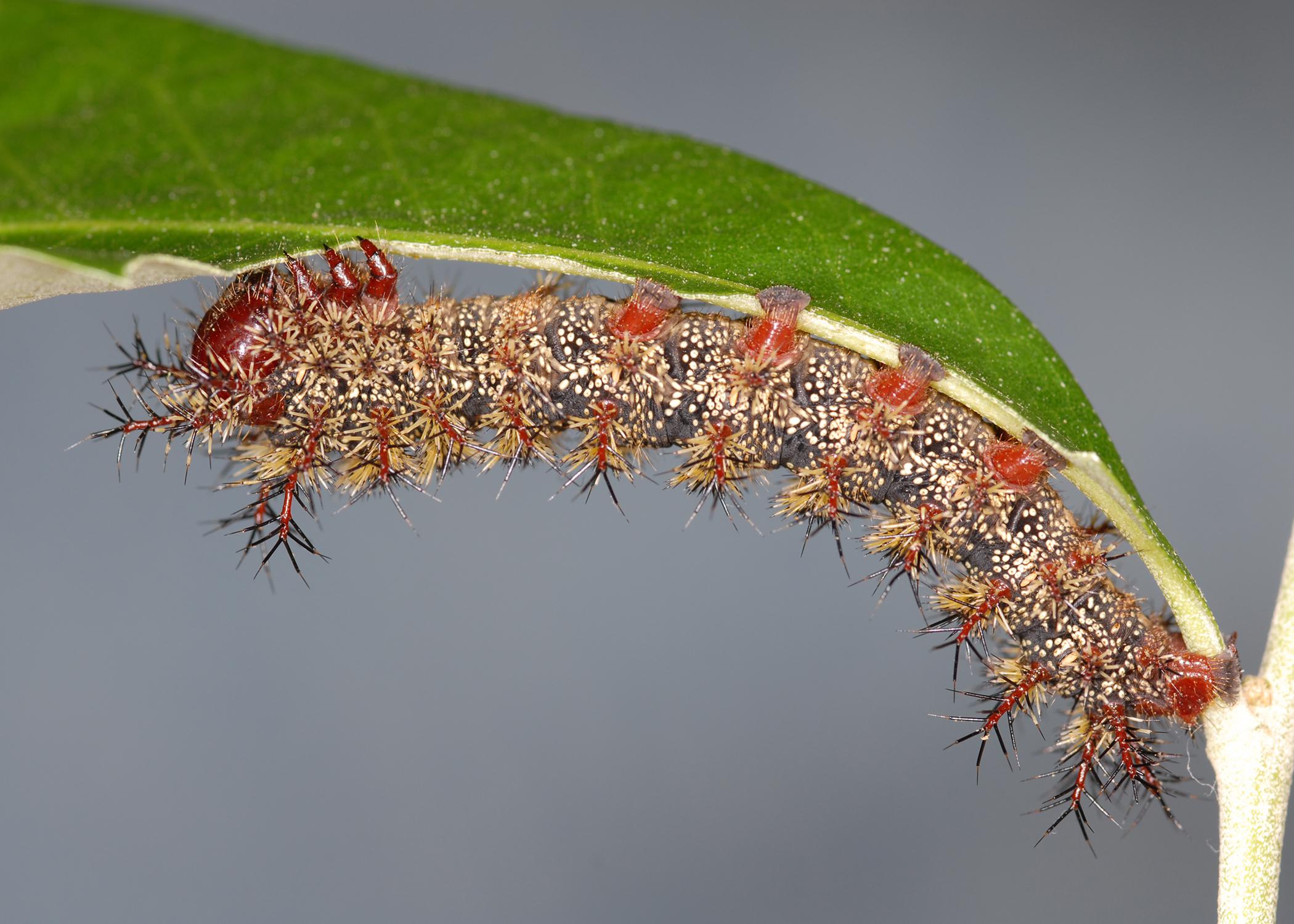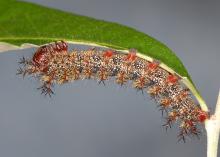Information Possibly Outdated
The information presented on this page was originally released on April 21, 2020. It may not be outdated, but please search our site for more current information. If you plan to quote or reference this information in a publication, please check with the Extension specialist or author before proceeding.
Stinging caterpillars are active in the state
STARKVILLE, Miss. -- Mississippi does not have to deal with plagues of locusts like those ravaging other parts of the world, but it does have to contend with a stinging caterpillar that is on the increase this spring.
Currently, a plague of desert locusts is presenting an unprecedented threat to food security and livelihood in East Africa, Southwest Asia and the Arabian Peninsula, according to Locust Watch, an arm of the Food and Agriculture Organization of the United Nations.
Blake Layton, entomologist with the Mississippi State University Extension Service, said Mississippians face no similar threat to life and food supply from insects, but they do struggle with a large number of pests, including a stinging insect larva known as the Buck moth caterpillar.
Layton said Mississippi actually is home to a grasshopper that belongs to the same genus as the desert locust, but it never reaches high populations or triggers migratory or plague behavior.
“We used to have the Rocky Mountain Locust in the western U.S. that sometimes occurred in plague numbers, but it has gone extinct,” Layton said. “It is still possible to collect specimens -- or at least pieces and parts -- from the melting faces of Wyoming glaciers.”
While the Buck moth caterpillar isn’t a pest of Biblical proportions, it can cause painful stings to unwary Mississippians. These caterpillars are active along Interstate 20 and are expected to move northward through April and into May, Layton said.
“These are native insects, but populations are more numerous some years than others,” Layton said. “At this point, it is difficult to say if this is an outbreak year, but I have received a few more inquiries than usual. Of course, it is still possible to get stung even in low or normal population years, especially if one does not realize these caterpillars can sting.”
Buck moth caterpillars are usually seen as purplish-black, spine-covered grubs that are about 2 inches long.
“They look like they can sting, and they can,” Layton said. “Close skin contact with buck moth caterpillars results in painful stings. I have met several people who had roughly caterpillar-shaped scars from encounters with these caterpillars.
“Such stings usually occur when someone inadvertently sits on a caterpillar while wearing shorts, rests a forearm on one or has one crawl down their collar,” he said.
Fortunately for Mississippians, these caterpillars have only one generation per year, and they are only active for two to three weeks.
Oak trees, particularly live oaks, are the primary host of the buck moth caterpillar. Although they are rarely numerous enough to cause serious defoliation, landscapes with large numbers of oaks tend to have the most caterpillars.
Like many tree-dwelling caterpillars, Layton said, these insects leave the tree and wander over the ground when they are ready to pupate.
“This is called the wandering phase, and it is when most sting events occur,” Layton said. “Wandering caterpillars sometimes form a follow-the-leader type processionary line as they make their way to the ground.”
Insecticide sprays are not usually very practical or effective against large, wandering caterpillars. The best defense is to simply be aware of the caterpillar’s presence and avoid close contact.
Layton said forest tent caterpillars and fall armyworms are other examples of caterpillar pests whose numbers in Mississippi vary from year to year.
For more information on caterpillars or other insect pests in the home landscape, visit the MSU Extension web site, “Insects-Ornamental Plants,” at http://extension.msstate.edu/lawn-and-garden/insects-ornamental-plants.



